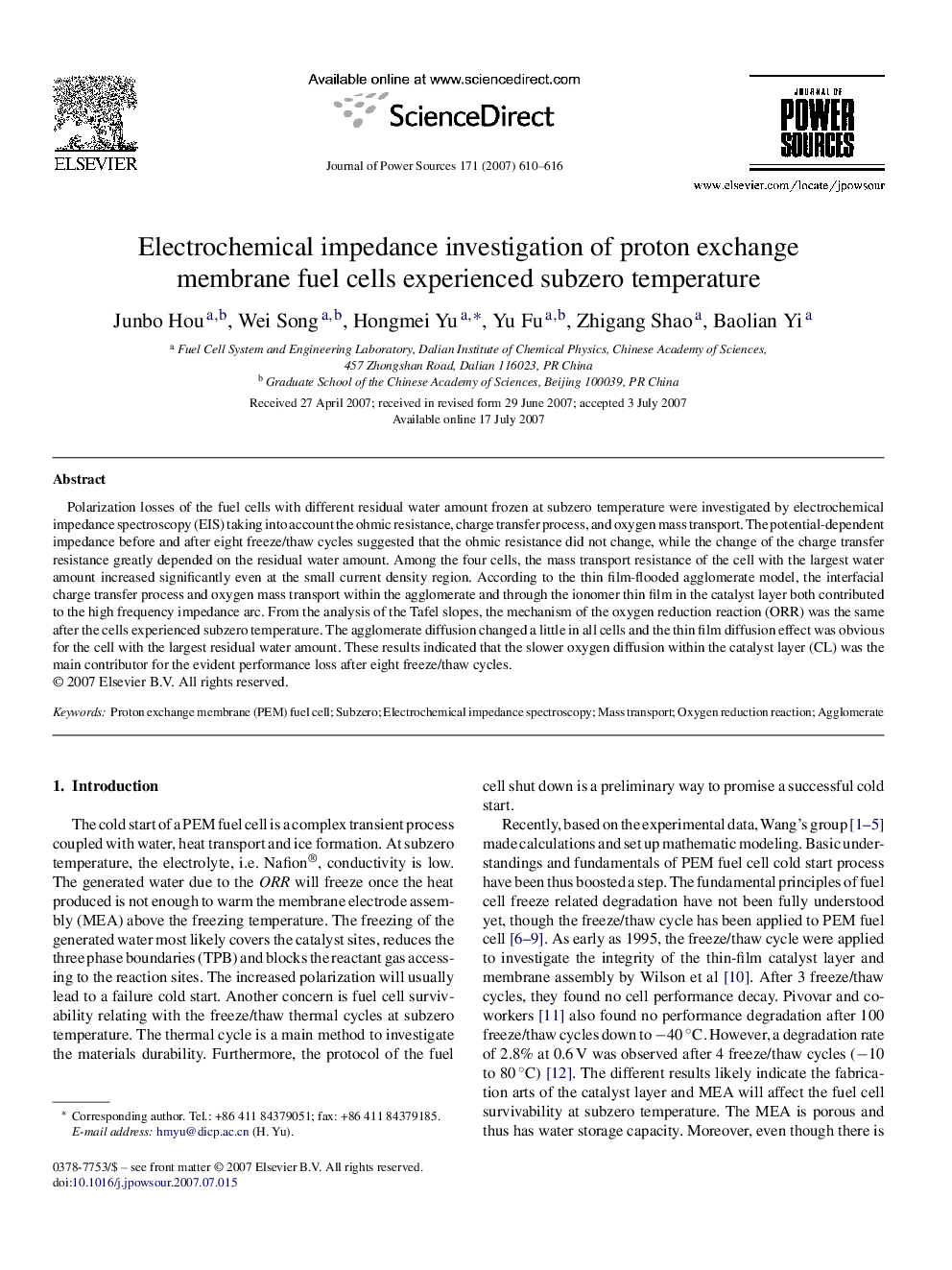| Article ID | Journal | Published Year | Pages | File Type |
|---|---|---|---|---|
| 1286374 | Journal of Power Sources | 2007 | 7 Pages |
Polarization losses of the fuel cells with different residual water amount frozen at subzero temperature were investigated by electrochemical impedance spectroscopy (EIS) taking into account the ohmic resistance, charge transfer process, and oxygen mass transport. The potential-dependent impedance before and after eight freeze/thaw cycles suggested that the ohmic resistance did not change, while the change of the charge transfer resistance greatly depended on the residual water amount. Among the four cells, the mass transport resistance of the cell with the largest water amount increased significantly even at the small current density region. According to the thin film-flooded agglomerate model, the interfacial charge transfer process and oxygen mass transport within the agglomerate and through the ionomer thin film in the catalyst layer both contributed to the high frequency impedance arc. From the analysis of the Tafel slopes, the mechanism of the oxygen reduction reaction (ORR) was the same after the cells experienced subzero temperature. The agglomerate diffusion changed a little in all cells and the thin film diffusion effect was obvious for the cell with the largest residual water amount. These results indicated that the slower oxygen diffusion within the catalyst layer (CL) was the main contributor for the evident performance loss after eight freeze/thaw cycles.
